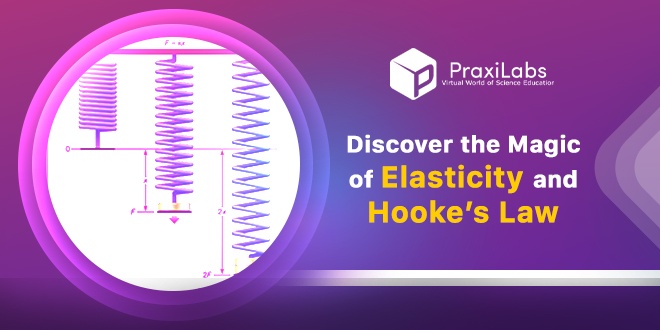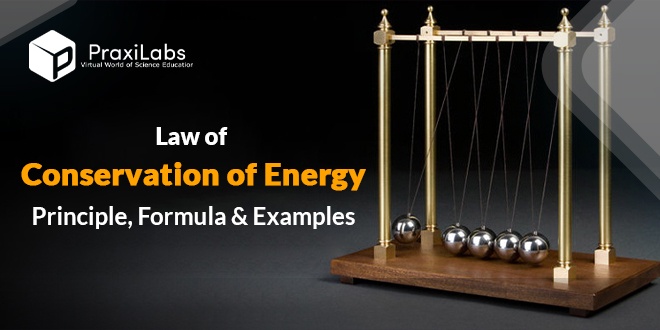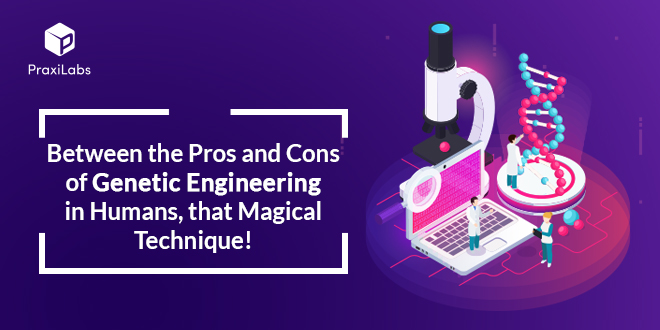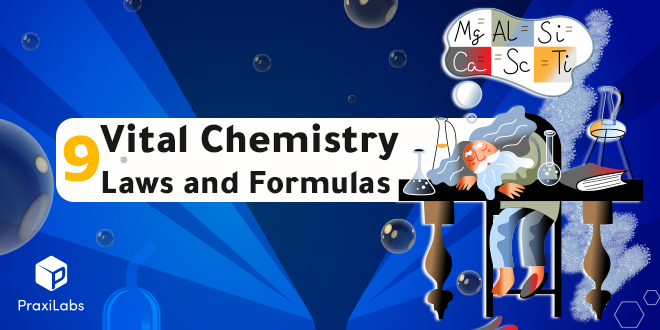-
Physics

Einstein’s Theory of Relativity: Understanding General and Special Relativity
Last Updated on December 22, 2022 by Sherouk Badr Shehata One of the most famous and revolutionary scientific theories of the 20th century is Einstein’s theory of relativity. It was proposed by the German-born physicist, Albert Einstein, in 1905 and has since then been accepted as a fundamental theory of physics. This theory has brought about a radical transformation in the way we understand the universe and has had a profound impact on many fields such as cosmology, astrophysics, and quantum mechanics. In this article, we will take a closer look at Einstein’s theory of relativity, explore how it works, what its aspects of applications are, and how it changed the way we view the universe. Introduction to Einstein’s Theory of Relativity Einstein’s theory of relativity is a groundbreaking concept that explains how gravity influences the movement of objects. It states that: “All observers, regardless of their own movement, must abide by the same physical laws and that the speed of light is always the same, regardless of the motion of its source.” This theory is considered to be one of the most significant scientific breakthroughs of the 20th century and has had a profound impact on our comprehension of …
Read More » -
Physics

Exploring the Free Fall Experiment: A Comprehensive Guide (with Equations)
Last Updated on December 10, 2022 by Sherouk Badr Shehata Have you ever dreamed of defying gravity? That dream can now become a reality with the free-fall experiment. This experiment is a great way to learn about the principles of gravity, acceleration, and the conservation of energy. It is also a really fun and interactive way to explore one of the most fundamental laws of nature. In this comprehensive guide, we will walk you through the steps of the experiment, help you understand the equations involved, and discuss why it works the way it does. In no time, you will be ready to take on the challenge of creating your own free-fall experiment. What is the Free Fall Experiment? The free fall experiment is designed to demonstrate the effects of gravity on objects in free fall and the conservation of energy in such a scenario. Both concepts are fundamental to the workings of the universe. The free fall experiment is a great way to explore the principles of gravity, acceleration, and the conservation of energy. Essentially, the experiment involves dropping two different objects (such as a bowling ball and a tennis ball) from the same vertical height and measuring how …
Read More » -
virtual learning articles

Taq Polymerase: The Key to PCR Testing
Last Updated on November 16, 2022 by Sherouk Badr Shehata The PCR test is a method of amplifying specific DNA sequences using taq polymerase. This technique was first developed in the 1980s and has since revolutionized biology testing. Prior to PCR, only small amounts of DNA could be isolated and analyzed from samples. However, PCR allows for the amplification of minute amounts of DNA, making it possible to obtain accurate results from even trace amounts of genetic material. Taq polymerase is a key enzyme in the famous PCR (polymerase chain reaction), a powerful technique used to amplify DNA. Taq polymerase is able to withstand the high temperatures required to denature DNA, and can then efficiently copy the template DNA strand. This makes it an essential tool for PCR-based applications such as DNA sequencing, forensics, and genetic engineering. Taq polymerase is used in research to study the function of genes and to develop new diagnostic tests and treatments for diseases. Its discovery and its role in PCR has had a profound impact on science and society, and this enzyme continues to be an essential tool in modern biotechnology. Additionally, taq polymerase has an important role in ensuring the fidelity of DNA …
Read More » -
Free-Body Diagrams– How to Exclusively Chart the Path of an Object’s motion
Last Updated on November 15, 2022 by Sara Assem Have you ever wondered how physicists create free-body diagrams? What about economists or biologists? All of these professionals use specific symbols to chart the motion of an object. The importance and virality of free-body diagrams (FBD) in physics are beyond description. Free-body diagrams emerged since Newton’s laws of motion stretched out to include many forms of dynamic and static motion. Such diagrams can vary in their level of simplicity. Some diagrams may be very simple, while others can be very sophisticated, need special treatment and undergo many steps. A free-body diagram is a tool that is incredibly useful to visually chart the path an object will take under different circumstances. By understanding how external forces influence movement, you can improve your predictions and problem-solving skills. We will start by defining what an FBD is and then explore some real-world examples. Finally, we will look at some tips for creating effective FBDs. After reading this blog, you should have a basic understanding of how to approach problems that require FBDs and be able to diagram simple motions accurately… Let’s take a closer look! Free-Body Diagram Definition A free-body diagram is “a …
Read More » -
Physics

Discover the Magic of Elasticity and Hooke’s Law
Last Updated on November 15, 2022 by Sara Assem A true wonder of humanity’s creative mind and engineering is the spring! With its many different forms and specific functions—the coil spring, the compression spring, the extension spring, the torsion spring, and more—our mankind was offered the chance to fabricate and invent many more useful objects. This man-made revolution of tools and applications came out as a consequence of the Scientific Revolution that took place during the 17th and the 18th centuries. Springs undergo a definite physics law, scientifically known as: Hooke’s law of stress-strain, Hooke’s law of elasticity, or simply Hooke’s law. What is Hooke’s law? Does it apply to elastic materials or to inelastic materials? How does Hooke’s law work? And why is Hooke’s law important in physics and in our lives in general? Those are all questions that might all have come to your mind the moment you read the word “Hooke’s law.” In this fruitful blog, Hooke’s law will be explained extensively and you will grasp its nature, know what its examples and applications are, understand which mathematical equations describe it, and grasp how to account for it… Let’s go! What’s the Story of Hooke’s …
Read More » -
virtual learning articles

Going Global! How PraxiLabs Benefits STEM Professors in the Philippines
Last Updated on November 15, 2022 by Sara Assem On September 21st, a very exciting online webinar was hosted by Khadija El-Bedweihy—Founder of PraxiLabs virtual labs—to reveal the significant on-hands learning outcomes and changes that came as a result of using PraxiLabs. The webinar guest speakers varied from professors to students: Mrs. Iluminada A. Ronio— Program Chair, Department of Biotechnology, College of Allied Sciences Mr. Blas Cintron, student Mr. Reavene Apostol, student And they are from the De La Salle Medical and Health Sciences Institute, Philippines. PraxiLabs online virtual labs are designed to tackle pivotal challenges that face students in the STEM educational system. Laboratories are a core component to all STEMers now. Yet, if you are one, you must be looking for ways to overcome the obstacles of traditional labs. The majority of the reported problems faced are: Spending a short period of time in the lab Safety related considerations and precautions The high cost of the consumables and many more The solution to all of this is unique, available online, and very easy to use: virtual labs. Not to mention, they are a complementary alternative, not a complete substitution, but they’re 3D realistic labs. Nothing comes closer to …
Read More » -
virtual learning articles

Law of Conservation of Energy: Principle, Definition, Formula, and Examples
Last Updated on November 15, 2022 by Sara Assem On a cold night, how do you interpret the feeling of warmth you feel after rubbing your hands together? How do you explain your coach’s strict instructions to eat a meal that gives you energy before exercising? For a light bulb to glow and emit its light, how do you describe its principle of work? Many questions around everyday’s spontaneous actions and phenomena we witness can be clarified and explained using the physics laws and principles that govern them. Usually, the answers are quite basic and simple. The answer to our starter questions is very basic, yet dynamic: it is the law of conservation of energy. In this article, the law of conservation of energy will be fully introduced. From its definition, formula, to everyday examples, its principle of work and how to differentiate between the various types of conservation of energy laws in physics… are you ready? What are the 3 laws of conservation of energy? If it is not your first time to hear the term “law of conservation” or “conservation of energy”, then it might still be your first time to know that there are three different …
Read More » -
Physics

Pascal’s Law: All You Need to Know about this Powerful Law!
Last Updated on November 15, 2022 by Mostafa Pressure is an intrinsic property of matter. You can exert pressure on a solid, a liquid, or on a gas, and so can solids, liquids, and gasses according to the surrounding conditions. A famous example in this context is the cautionary signs on your perfume bottle, saying “the bottle should not be left in the sun, or in high temperatures, to avoid explosions.” Liquids and gasses—known as fluids—are the two types of matter that go through continuous and noticeable changes caused by pressure. Many laws of physics discuss and explain the behavior and mechanisms of fluids. And Pascal’s law is on the top of this list. The law is also known as the principle of transmission of fluid-pressure, or Pascal’s principle. Discover everything about Pascal’s law definition, its formula, and applications in this article. Besides, we are going to see how Pascal’s law is used in hydraulic lift and how to calculate Pascal’s law. Let’s start figuring this law out… Pascal’s Law of Hydrostatics The French mathematician, philosopher, and physicist Blaise Pascal was interested in developing the concept of pressure (1623-1662). He discovered his famous Pascal’s law while conducting an interesting experiment. …
Read More » -
Biology

Genetic Engineering in Humans: Between the Pros and Cons of that Magical Technique!
Last Updated on April 11, 2023 by Sara Assem Try to mention the expression of genetic engineering in humans among a bunch of people, or a community gathering. Now try to escape the endless amount of questions, hurdles, and debates that will arise. technical Since their first days, genetic engineering, gene modification, and traits selection have always been controversial and have always been questioned, whether socially, scientifically, or ethically. Questions and interrogations considering safety, individual liberties, and social inequality and aristocracy are the main ones surrounding this hot topic. In this article, we will talk about the definition of genetic engineering, what genetic engineering in humans is, and how it can affect our lives. What are the pros and cons of genetic engineering? What is the importance of genetic engineering in humans life? That’s in addition to discussing ethical and safety considerations and regulations that are of a huge importance to everyone, from scientists and researchers to patients & parents… Let’s start! What is Genetic Engineering Used for? Before knowing what genetic engineering is used for, let first things come first: what is genetic engineering in its essence? What is its definition? Deep down the cells of any living …
Read More » -
Chemistry

9 Essential Chemistry Laws and Formulas You Should Know!
Last Updated on May 15, 2023 by Sara Assem Chemistry is the branch of science through which interactions and reactions between different atoms, electrons, elements, molecules, and many other particles are being analyzed, tested, and studied. As a vital branch of science, chemistry exists around us in a daily manner, whereas chemical interactions and reactions do not occur haphazardly; rather they are all governed by many chemistry laws that our scientists managed to figure out many years ago for our human civilization. And whether you are a science student or not, it is necessary to—at least—know the most important chemistry laws governing this science, their nature, and maybe study them. In this article, we cover the 9 most critical chemistry laws and how they work… Let’s start! Chemistry Laws Chemistry laws are many, and they are subject to changing and evolving with every new detection and discovery. These laws work hand in hand with every other law that we know rules other phenomena and reactions. Whether these laws are biological, mathematical, or physical, they are all still seen as “the laws of nature.” In chemistry, three laws are looked at as the “fundamental chemistry laws,” and they are: The …
Read More »









